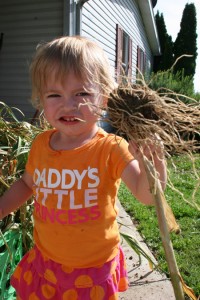 Botanically named Allium Sativum, garlic is a member of the lily family along with chives, shallots and onions. Garlic is the common name dedicated to hundreds of varieties which can be classified as hardneck and softneck types. Of these types, softneck varieties are most commonly grown as they easier to grow, less particular about growing conditions, slower to bolt and generally produce more cloves per bulb.
Botanically named Allium Sativum, garlic is a member of the lily family along with chives, shallots and onions. Garlic is the common name dedicated to hundreds of varieties which can be classified as hardneck and softneck types. Of these types, softneck varieties are most commonly grown as they easier to grow, less particular about growing conditions, slower to bolt and generally produce more cloves per bulb.
Geography/History
All garlic cultivars are considered to be derived from ten specific varieties of garlic that evolved in the Caucasus Mountains between the Black Sea and the Caspian Sea. Garlic has been altered over time by natural and intentional selection, ever changing growing conditions, such as soil fertility, rainfall, temperature, altitude, length and severity of winter and as trade routes were evolved and extended.
Nutritional Value
All varieties of garlic possess antibiotic properties to some forms of bacteria, viruses and intestinal parasites. Plants in the garlic family lower blood pressure and cholesterol, and may also be used as a diuretic, an anti-inflammatory agent, an expectorant or a decongestant.
Applications
It is only when garlic cloves are cut or crushed, and the cellular walls breached, that an odor-causing reaction takes place, as enzymes mix with volatile sulfur-containing compounds. Crushing, chopping, pressing or pureeing garlic releases more of its essential oils and provides a sharper, more assertive flavor than slicing or leaving it whole.
 Just for Fun!
Just for Fun!
While helping with the harvest, Arroya was being pestered by flies and sweat bees. She broke open a garlic clove and rubbed it on her exposed skin and all that “pestering” disappeared!! When we brought in our first batch of harvested garlic, we temporarily hung it in the garage while our drying racks were being built in the barn. While sitting in the garage one nice cool evening with the lights on, Travis comments, “there aren’t any bugs in here!” Testaments that garlic is a great, natural repellent!